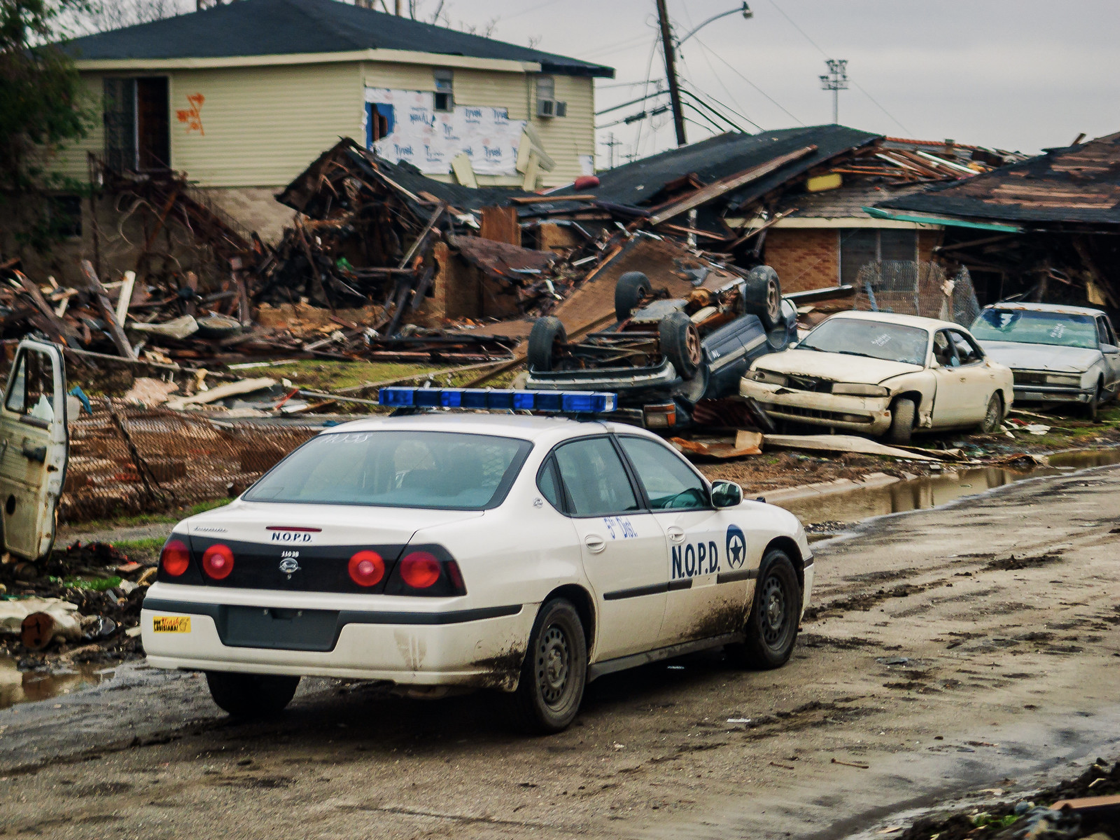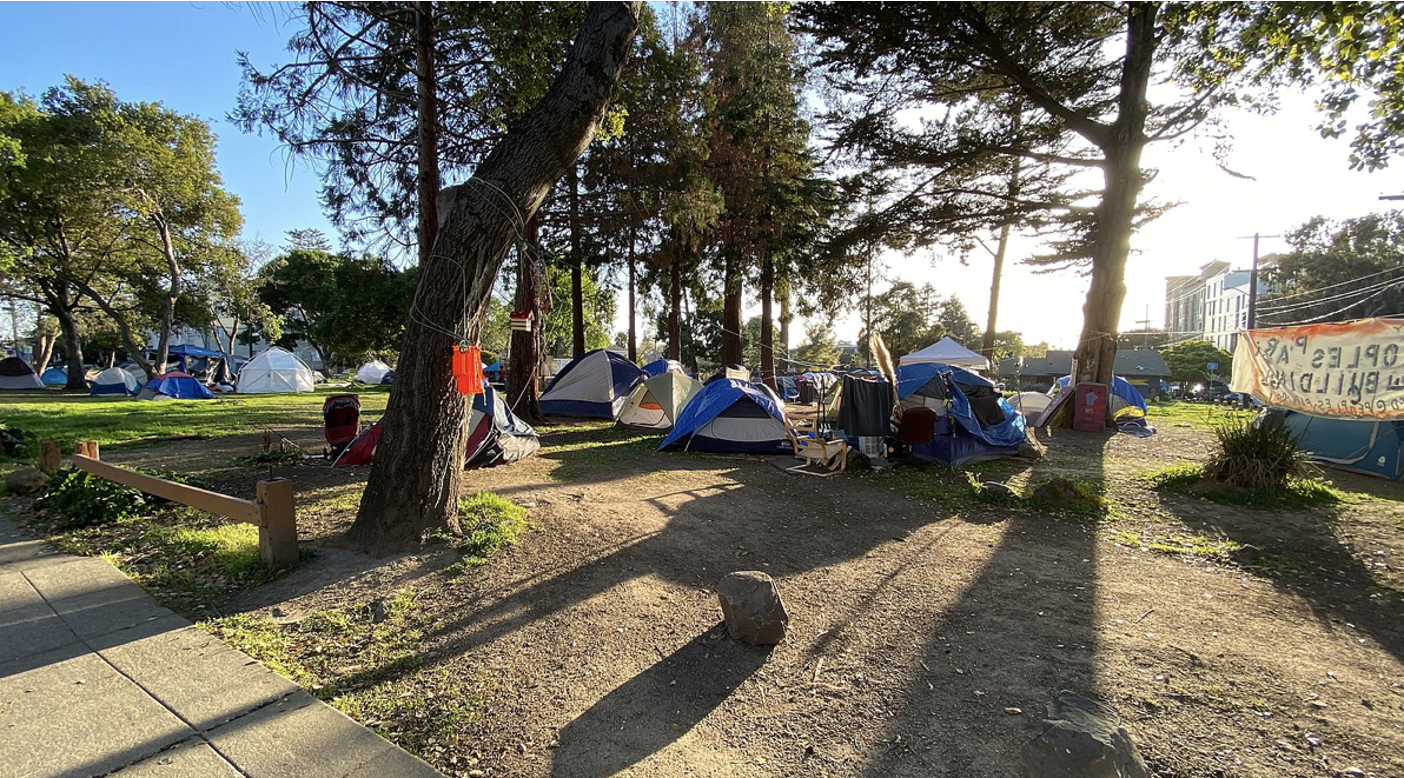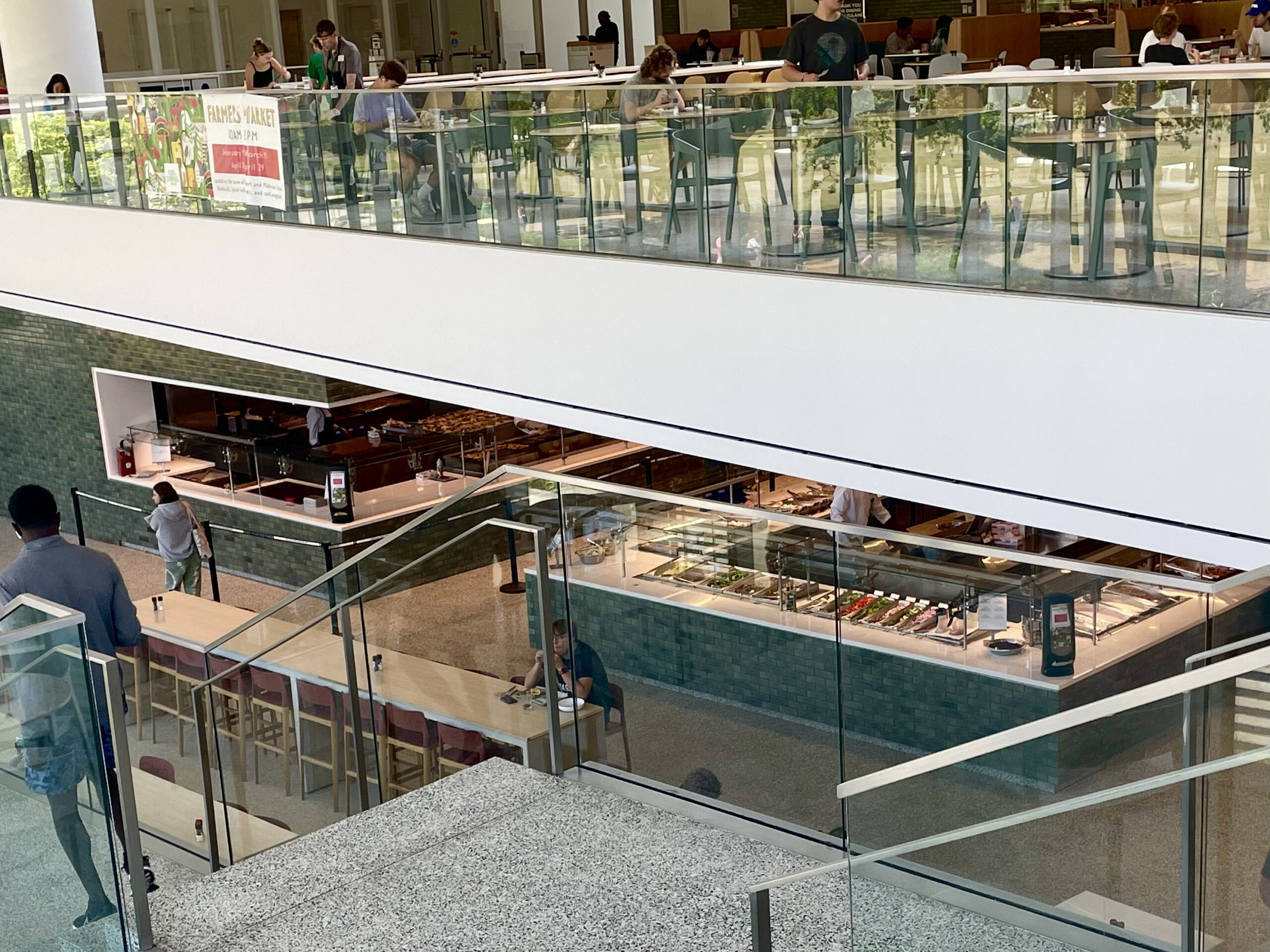Part I: The Problem
It’s no secret that foods like Gumbo, Beignets, and Po-Boys are some of the building blocks of New Orleans culture; Mark Twain claimed, “New Orleans food is as delicious as the less criminal forms of sin.” In 2018, tourists spent a combined $2.68 billion on foods and beverages. For a city so known for its cuisine, it may come as a shock to many that during the same year, 2018, over 773,850 Louisiana residents reported going hungry every day.
Areas like the Lower Ninth Ward, a neighborhood in New Orleans that is 92.5% Black, have fallen victim to food insecurity. More specifically, this neighborhood is categorized as a food desert, defined by the USDA as a “low-income area with a population greater than 500 that lacks a full-service grocery store within one mile” The median income of this neighborhood is $27k, (below the poverty threshold,) therefore residents of this area are much less likely to be able to afford a car, making it difficult to access a supermarket with more options. Food deserts tend to only have corner marts that sell unhealthy food, rarely offering any fresh produce. Out of the few convenience stores that do sell fresh produce, Food Empowerment Project reported that they typically only sold items like bananas or apples individually. Since these individually sold items don’t usually have prices, the customer is at the mercy of the person behind the counter who can decide the price.

A sign welcoming people into the Lower Ninth Ward
Steep prices make it quite difficult for Americans to eat healthily; the price of fruits and vegetables increased by about 75 percent between 1989 and 2005 just as the price of fatty foods dropped by more than 26 percent. In a food desert, these steep prices are heightened; products bought in urban food deserts tend to be between 3 and 37 percent more than customers pay at suburban supermarkets. Since food deserts are occupied by low-income residents, it is incredibly difficult to maintain a nutritional diet while still being able to pay the bills. Residents usually show up to corner marts to find one option: an unhealthy diet. Buying processed foods like snack cakes and chips may not be very appealing, but it’s better than going hungry. The consequences of diets like this include health issues like obesity, type 2 diabetes, and cardiovascular disease, the latter two being the seventh and first leading causes of death in the US respectively. The SEARCH for Diabetes in Youth study revealed that the rise in type 2 diabetes cases has been the largest for Black Americans, Native Americans, and Hispanic Americans. These also happen to be the groups most likely to live in food deserts.
Structural racism is a large contributing factor to the creation of food deserts. For example, after President Roosevelt introduced the New Deal, settlement patterns changed. The New Deal’s National Housing Act of 1934 promoted homeownership by providing federal backup of loans that guaranteed mortgages, however, this was almost solely offered to white buyers. This drew lines between black and white neighborhoods, many of which still exist today. This denial of services like loans based on race is called redlining, a term that originated with red lines on maps that identified predominately Black neighborhoods as dangerous. Supermarkets followed the White, Middle-Class Americans to the suburbs, leaving Black Americans stranded in the cities, which were losing supermarkets.
Today, there are clear disparities between predominately minority communities and non-minority communities. In Detroit, which is 83% African American, there are no major chain supermarkets, while in Los Angeles, predominately white residential areas have “3.2 times as many supermarkets as predominately African-American areas in the city” (Barker, Francois 2012, 5). In New Orleans, predominately white areas like Uptown have plenty of grocery stores like Rouse’s, Winn Dixie, Fresh Market, and Whole Foods, while the Lower Ninth Ward has none of these.
The tendency for Black Americans to live in food deserts means that Black Americans are likely to struggle with the many hardships of living in a food desert; not only does it impact the health of its inhabitants, but it can also influence “cognitive development in early childhood, an individual’s susceptibility to illness, and, potentially, educational outcomes within a community” (Barker, Francois 2012, 6). Citizens of the predominately Black Lower Ninth Ward of New Orleans are facing these hardships, unable to access nutritious food without going to the next neighborhood over. Not to mention, these food deserts are exacerbated by devastating events like Hurricane Katrina and the Covid-19 pandemic.

Damage in New Orleans after Hurricane Katrina
Since Katrina, Lower Ninth Ward resident Nina Shelby-DuBosehas kept a stash of food in the cabinet above her stove. Nearly two dozen cans sat there just in case of emergency and were eventually used when her family lost most of their money during the pandemic. With a powerful Hurricane season every year, dark times come around again and again for New Orleans residents, and those with unequal access to food are hit hard. Because of these food deserts, a large portion of the Black community in New Orleans is hungry, in poor health, and in poor spirits. Even with farmers’ markets and food pantries being introduced to the area, the Lower Ninth Ward continues to struggle. This is not just about food insecurity in a low-income area, it is a striking example of structural racism that is inhibiting a minority group.
Part II: The Solution:
When studying at the University of California, Berkley, Komal Ahmad met a homeless man near campus and took him out to lunch. She learned that the man was a soldier in the Iraq war and hadn’t eaten in three days, anxiously waiting for his benefits to kick in. Upset by this man’s awful situation, she decided to start an initiative in her college that allowed the dining hall to donate excess food to local homeless shelters. “Imagine a football stadium filled to its absolute brim,” Komal explains, “with healthy, high-quality, untouched food. That’s how much food goes wasted every single day in America.” This is why Komal refers to food waste as “The World’s Dumbest Problem.” “Hunger is not a scarcity problem, it’s a logistics problem,” she explains.

Tents set up by the homeless population in Berkley during the COVID-19 pandemic
Komal asked the dining hall managers what they did with all the leftover food, and after a bit of prodding, they admitted that they threw the leftover food away because of liability concerns. She did some research and found out that Congress passed the Bill Emerson Good Samaritan Food Donation Act in 1996, an act that protects companies from liability when donating excess food. Knowing that the dining hall manager could safely proceed without liability concerns, she started the first food-recovery organization on a college campus, donating the dining hall’s leftover food to the homeless population. As the one who usually got the call from the dining hall manager to deliver the food, she got to directly see the impact she was making on the homeless population when hand-delivering these items.
Although much of the homeless population in the area was being fed, she soon found that the system wasn’t completely efficient. When the dining hall manager gave Komal 500 gourmet sandwiches to donate, she was excited to get them out to the homeless population in Berkley, Oakland, and the Richmond area. She called every nonprofit; one-third didn’t answer the phone, another third said they had enough food, and the last third barely needed any. She knew there had to be an easier, more efficient way to get food out to the people who need it. She came up with the idea of a virtual marketplace to easily connect those who have excess food to those who need it, referring to it as a “Match.com for sandwiches.”
Komal looked at the technology of Uber, an efficient rideshare service that allows users to request rides that come within minutes. Since Uber’s request and drop-off process works so efficiently, Komal knew that this same concept could successfully extend to excess food delivery. This was the start of Copia, a for-profit platform that connects corporate cafeterias, hospitals, universities, hotels, restaurants, and other businesses that have high-quality food or raw ingredients with organizations that need food. Copia’s technology is simple: Businesses choose a plan (starting at $69 monthly,) to schedule pickups of Surplus food on the app, and a Copia donation driver will safely deliver it to a local nonprofit recipient. On the other end, nonprofit recipients simply create a free profile on the app and request donations.
In addition to allowing businesses to donate excess food, Copia’s technology tracks surplus trends and offers useful data to inform food purchasing decisions. Businesses also gain the benefit of significant tax savings and a $14 return on investment for every dollar they invest in food waste reduction. The company is based in California, specifically the San Francisco Bay Area, but has expanded to serve across the United States, Puerto Rico, and Canada. They work with companies like the Cheesecake Factory, the Arizona Cardinals, Sutter Health, and more. In California, Copia worked with SF Fights Fire to distribute food to thousands of wildfire evacuees and first responders, effectively aiding the community during a natural disaster. Copia has even been contacted by German and Austrian officials for help distributing food to Syrian refugees. From its start in 2011 to today, 2022, Copia has recovered over 4 million pounds of food and delivered over 3.5 million meals. Copia continues to believe that hunger does not need to exist, especially when there is three times more food waste than mouths to feed. Impossible is not in Copia’s vocabulary; they continue to develop their technology to feed those in need and help companies reduce food waste, solving the notoriously difficult-to-solve issue of food insecurity in America.
Part III: Implementation
In 2016, the annual food waste produced by the Louisiana food industry was 32 million lbs. In New Orleans, much of this waste is coming from restaurants and college dining halls. At Tulane University in Uptown New Orleans, delicious and nutritious foods like broccoli and tofu are produced daily at the Commons dining hall. With a decent portion of the student population neglecting their meal plan, healthy meals and raw ingredients are going to waste each day. Many Tulane students even mocked and threw away their bags of nonperishable food given in preparation for dangerous storms like Hurricane Ida. With all this food waste just a short drive from neighborhoods like the Lower Ninth Ward, a strategy like Copia’s would be very useful in this city.

Tulane University’s Dining Hall
If the Commons donated food each day, perhaps enlisting student volunteers to drive food down to nonprofits in the Lower Ninth Ward, residents would instantly have access to much healthier options right at their doorstep. One obstacle of Copia is the monthly pricing for the service, which some companies may not be willing to put money towards. The hope is that a similar system could be in place that is a bit more cost-efficient, and places like Tulane with loads of money would be willing to make this small sacrifice towards creating a more equal New Orleans, allowing Black people the same access to food as their predominately white students. Of course, New Orleans is unique in that there is a looming presence of hurricane season each year, and these natural disasters worsen the conditions of the food deserts. Luckily, Copia has proven to be successful in distributing food in the presence of natural disaster aftermath when they delivered food to evacuees and first responders during the worst of the wildfires in California. While some New Orleans inhabitants, including Tulane students, are privileged enough to have nutritious food provided during the days and weeks following hurricanes, others are going starving. Things like extra paper bags of nonperishable food can easily be driven to the Lower Ninth Ward, giving residents more security to keep them nourished in the aftermath. While this may not be a structural change that brings more supermarkets into food deserts or one that fixes the issue of racially segregated neighborhoods, it is certainly a step in the right direction. With a technologically efficient program like Copia, food desert inhabitants can have a healthy diet that prevents health issues like Diabetes, heart disease, and obesity. Over time, the harsh lines between Black and White New Orleanians can begin to blur, and combatting food inequality can be seen as a step toward combatting racial inequality.
Works cited:
Adams, Anthony Troy, et al. “Food Deserts.” Journal of Applied Social Science, vol. 4, no. 2, 2010, pp. 58–62., https://doi.org/10.1177/193672441000400206.
Barker, Charlene, and Anderson Francois. “Unshared Bounty: How Structural Racism Contributes to the Creation and Persistence of Food Deserts.” New York Law School, June 2012, https://digitalcommons.nyls.edu/cgi/viewcontent.cgi?article=1002&context=racial_justice_project.
“Bill Emerson Act.” Feeding America, https://www.feedingamerica.org/ways-to-give/corporate-and-foundations/product-partner/bill-emerson.
Ploeg, Michele Ver. “Access to Affordable and Nutritious Food: Measuring and Understanding Food Deserts and Their Consequences.” USDA, June 2009, https://www.ers.usda.gov/webdocs/publications/42711/12716_ap036_1_.pdf?v=41055.
“The Truth about Fats: The Good, the Bad, and the in-Between.” Harvard Health, 12 Apr. 2022, https://www.health.harvard.edu/staying-healthy/the-truth-about-fats-bad-and-good.
Whelan, Amanda, et al. “Life in a ‘Food Desert’.” Urban Studies, vol. 39, no. 11, 2002, pp. 2083–2100., https://doi.org/10.1080/0042098022000011371.
 NOLAbeings
Multimedia artist Claire Bangser created NOLAbeings as a portrait-based story project that marries...
NOLAbeings
Multimedia artist Claire Bangser created NOLAbeings as a portrait-based story project that marries...
 Data corner: Adobe Suite (create a PDF, social media graphic, presentation, edit a photo and video
Data corner is where you go to work with analytics and top tech skills. It takes on everything from PERL and SQL to Canva and Sprout Social.
Data corner: Adobe Suite (create a PDF, social media graphic, presentation, edit a photo and video
Data corner is where you go to work with analytics and top tech skills. It takes on everything from PERL and SQL to Canva and Sprout Social.

[…] to a 2021 estimate by Feed America. In the US overall, it is 13 percent, with Louisiana having the highest rate of food insecurity in the nation. Those living in neighborhoods like Tremé and the Ninth Ward live in what is known as a food […]